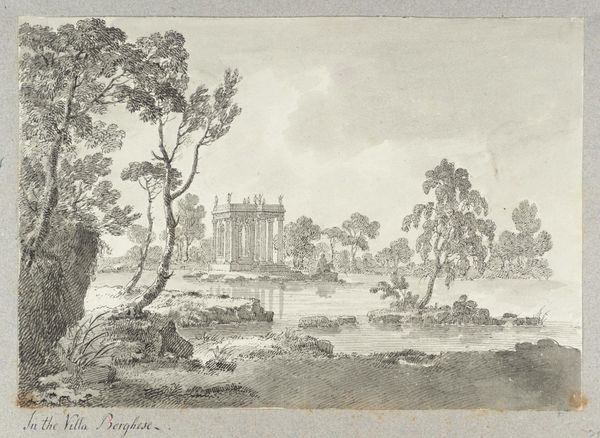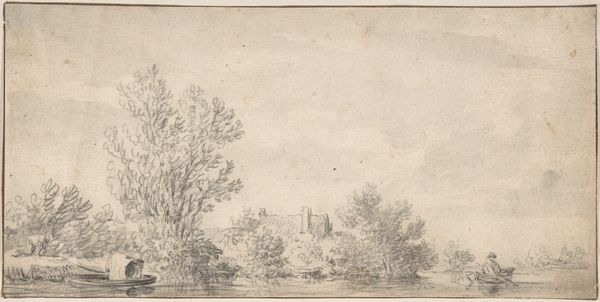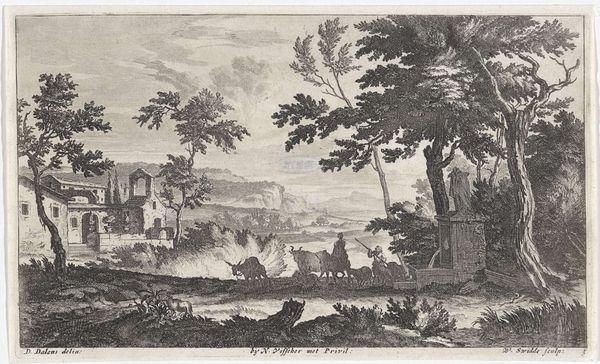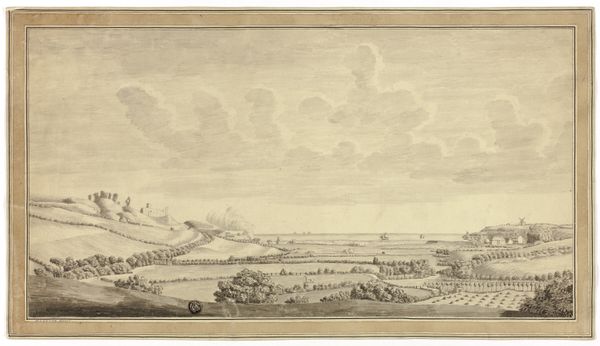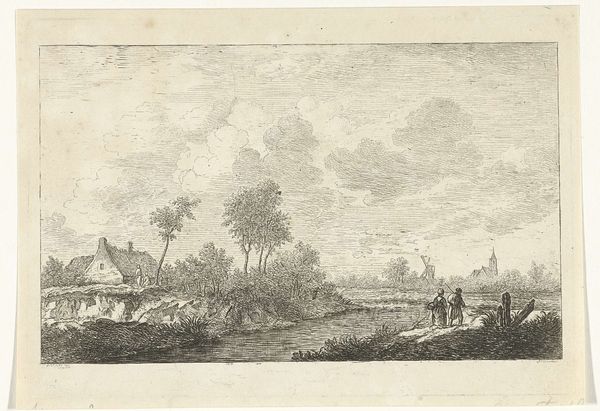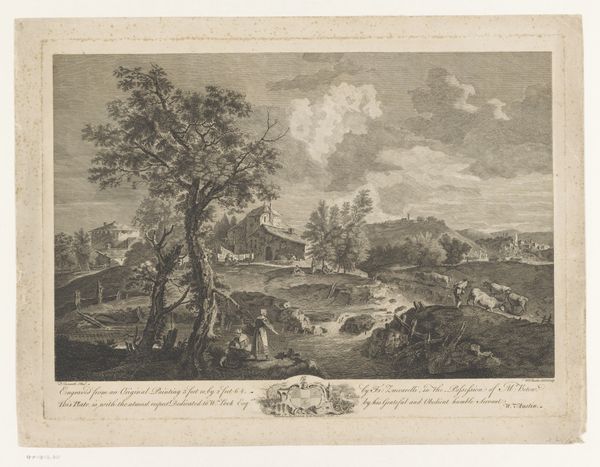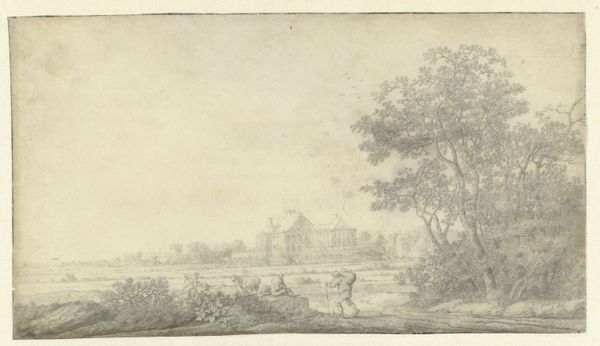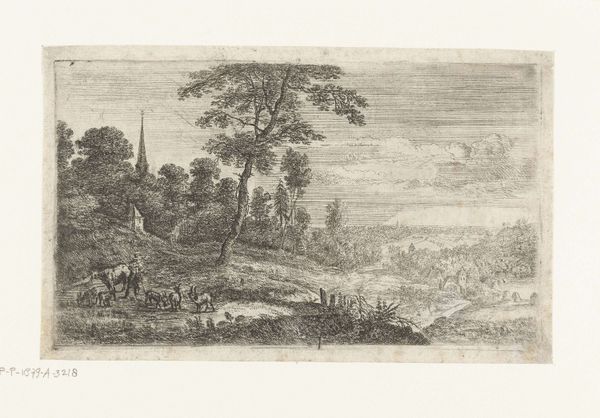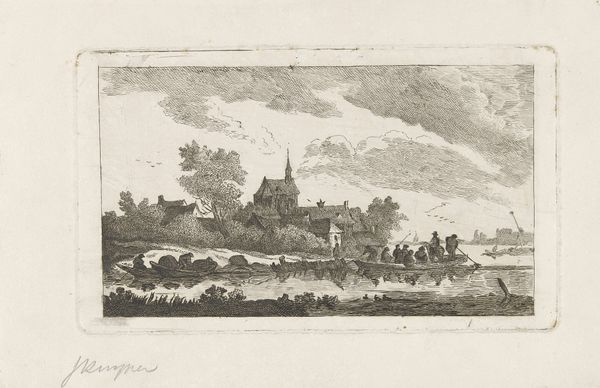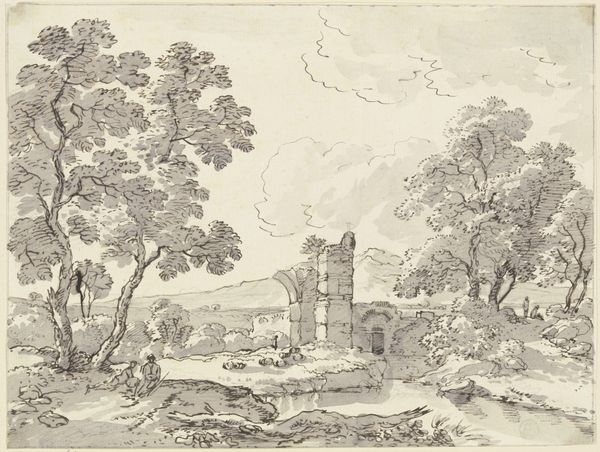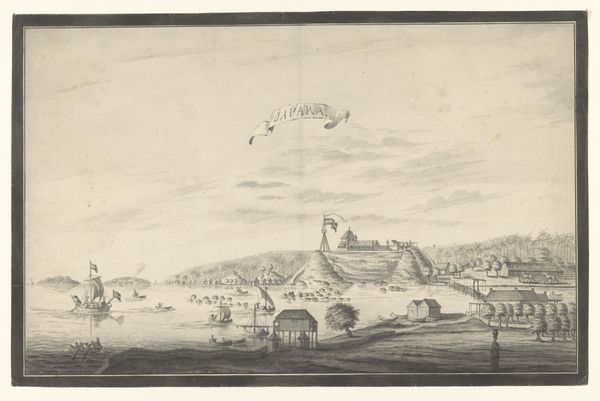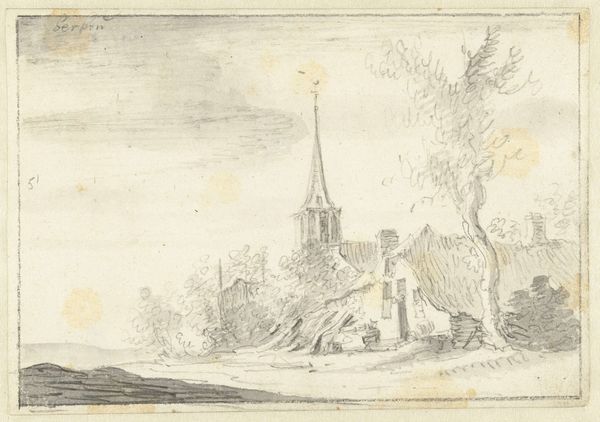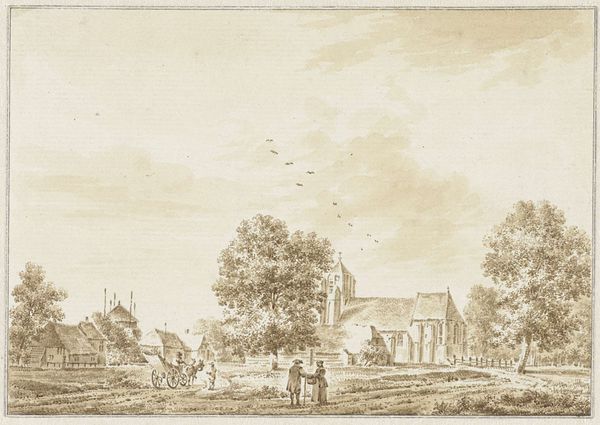
Dimensions: support: 279 x 381 mm
Copyright: CC-BY-NC-ND 4.0 DEED, Photo: Tate
Curator: Richard Wilson, an eighteenth-century landscape artist, created this piece, "Torre delle Grotte," now residing in the Tate Collections. Editor: Immediately, I'm struck by the sense of quiet drama. It's almost monochromatic, with these muted grays lending a somber air. Curator: Wilson's landscapes were often imbued with classical ideals, seeking to evoke a sense of the sublime. This piece, in particular, captures the grandeur of the Italian landscape. Editor: It feels almost like a memory, a dreamscape. The lone tower atop the hill, the boats on the water - are they meant to symbolize something larger, perhaps the fleeting nature of time? Curator: Wilson, like many artists of his time, was influenced by the Picturesque movement. The way he frames the composition, the play of light and shadow—it all contributes to a deliberately crafted image. Editor: I see that. I imagine it's a place one could easily get lost in, both literally and metaphorically. Curator: Exactly. Wilson offers us a glimpse into a world that is both beautiful and melancholic, inviting us to contemplate our own place within it. Editor: A beautiful reminder that even in stillness, stories unfold.
Comments
tate 6 months ago
⋮
http://www.tate.org.uk/art/artworks/wilson-torre-delle-grotte-t09300
Join the conversation
Join millions of artists and users on Artera today and experience the ultimate creative platform.
tate 6 months ago
⋮
This drawing in black chalk on a chalky grey-tinted paper shows Wilson's use of the stump (a roll of paper or soft leather cut to a blunt point at each end) to smudge and soften the black chalk. Wilson has applied subtle white chalk lines to the tops of the rocks and boats. Broader applications of white chalk in the sky, sea and rocks are slightly smudged, giving a sense of the moonlight falling over the scene. These highlights give luminosity to the drawing. Gallery label, April 2007
